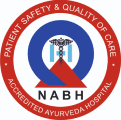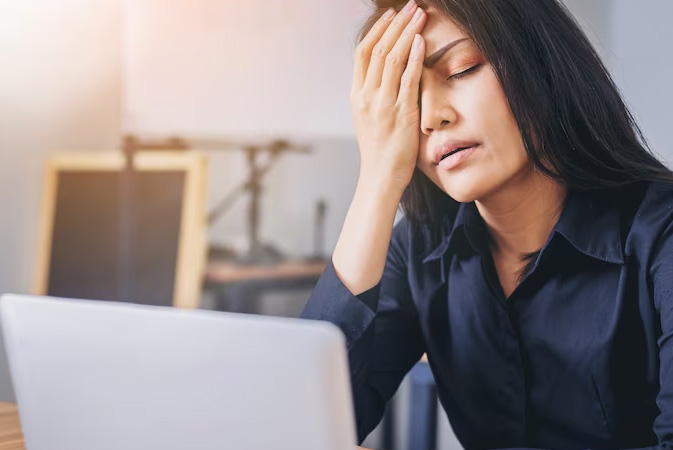



Natural & Safe Migraine treatment with our Classical Kerala Ayurveda Therapies
AyurVAID Hospitals is now a part of Apollo Hospitals Group.
A migraine headache is a form of vascular headache. Migraine headache is caused by vasodilatation (enlargement of blood vessels) that causes the release of chemicals from nerve fibers that coil around the large arteries of the brain. It is a debilitating condition characterized by moderate to severe headaches, and nausea,
about 3 times more common in women than in men. The typical migraine headache is unilateral pain (affecting one half of the head) and pulsating in nature, lasting from 4 to 72 hours.
Ardhavabhedhaka is termed as half headache where the tridosha vitiate and affects the half part of the head and causes different types of pain – pricking, cutting, stabbing, tearing, burning for a short duration and reoccur in 3-5-10-15-30 days. It associates with vertigo.
AyurVAID is India’s 1st Ayurveda hospital to be accredited by NABH (National Accreditation Board for Hospitals & Healthcare Providers), Quality Council of India.
Ardhavabhedhaka is termed as half headache where the tridosha vitiate and affects the half part of the head and causes different types of pain – pricking, cutting, stabbing, tearing, burning for a short duration and reoccur in 3-5-10-15-30 days. It associates with vertigo.
Suppression of natural urges, indulging in excessive exercise & sex, excessive intake of dry & rough food, fasting, exposure to fog or cold, talking loudly or irrelevantly. Due to all these causes, vata or vatakapha dosha vitiate, affects the Shiras, produces shirashoola in manya, shankha, lallata, bru, karna, netramandala, and finally causes blindness and deafness as complication.
Treatment principle includes Nidhana Parivarchana and Vata & vatakaphahara chikitsa – Shiroabhyanga, Snehapana, Swedha, ShroVasti, Virechana, Nasya, Vasti, Dhoomapana, Lepa, Sekha, Rakthamokshana, Agnikarma, Pranayama

1. Noticeable reduction in severity of the pain, duration of the headache, and frequency of attacks
2. No chance of recurrence
3. Complete relief in signs & symptoms mentioned above
Symptoms include nausea, vomiting, photophobia (increased sensitivity to light), phonophobia (increased sensitivity to sound), and is aggravated by routine activity. The severity of the pain, duration of the headache, and frequency of attacks is variable.
There are four possible phases to a migraine attack. They are listed below—not all the phases are necessarily experienced. Additionally, the phases experienced, and the symptoms experienced during them can vary from one migraine attack to another in the same person:
Lack of sleep, skipping meals, drinking alcohol, excessive exercise or too little physical activity, stress, travel, smoking, overweight. The highest incidence is in teenage years. Migraine headaches are more common among females—with a 3:1 female to male ratio.
Migraines seem to run in families. Approximately 90% of migraine patients have a positive family history. Migraines may be triggered by the blood vessels overreacting to a variety of factors, including menstruation, fatigue, changes in altitude, weather, or time zone, glaring lights, perfumes or other odors.
We work towards whole person health through classical Ayurveda science. Our Ayurveda case studies are the first-line evidence in Ayurvedic medical literature as they present the original observations from our Ayurveda practitioners. The case studies are published taking patient’s consent and maintaining patient anonymity.